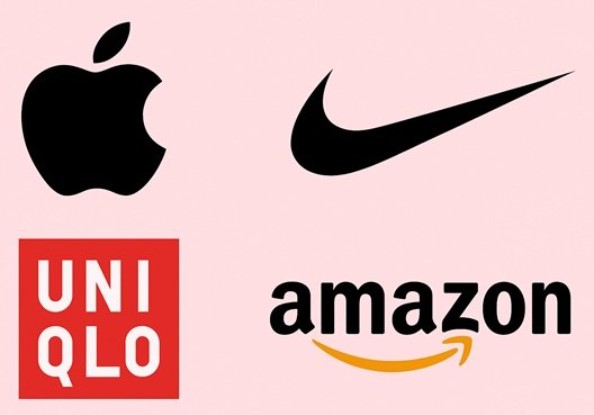
Interbrand’s Best Global Brands 2025 ranking reveals that the world’s most powerful consumer brands today are those that shape behaviour, emotion, and experience.
In an era defined by disruption, boldness, innovation, and cultural relevance have become the real currencies of brand value. Interbrand’s Best Global Brands 2025 ranking — released globally this week — reveals that the world’s most powerful consumer brands are no longer those that merely sell products, but those that shape behaviour, emotion, and experience.
The combined value of the top 100 brands now exceeds $3.6 trillion, up 4.4% year-on-year, underscoring global consumer resilience and the rise of AI-led brand ecosystems.
“Winners are those innovating across industries, creating cultural resonance, and investing in bold, long-term brand strategies. Reliance on legacy strength alone is no longer enough,”
— Ashish Mishra, CEO, Interbrand India & South Asia
Apple Still the Gold Standard of Consumer Brands
At the top of the list once again, Apple (#1) maintained its position as the world’s most valuable brand, with an estimated value of $525 billion — almost 17% higher than last year. The Cupertino giant continues to dominate through its seamless ecosystem of devices, services, and experiences, spanning hardware, entertainment, and now AI.
Its growing focus on Apple Intelligence and health-led wearables reflects a broader shift from a tech manufacturer to a lifestyle and wellness brand. Apple’s continued dominance illustrates Interbrand’s key insight: the brands that “operate across multiple arenas” — from devices to content to community — are the ones defining the future of consumer connection.
Amazon, Nike, Uniqlo, and Netflix Lead the Retail Revolution
Amazon (#3) continues to anchor global retail innovation with a brand valuation of $319.9 billion (+7%). Its integration of AI-powered logistics, faster fulfillment models, and expansion into healthcare and streaming solidify its status as the world’s most comprehensive consumer ecosystem.
Nike (#23), while recording a 26% decline to $33.7 billion, remains the world’s top apparel brand. Analysts attribute the dip to supply chain recalibration and rising D2C competition, yet Nike’s cultural relevance, storytelling, and athlete-driven brand aura remain unmatched.
UNIQLO (#47) entered the list for the first time — a historic moment for the Japanese fashion brand that has redefined simplicity as modern luxury. With a brand value of $17.7 billion, it stands out as a “functional, minimalist, and purpose-led” retailer. Interbrand notes that “UNIQLO has defied retail trends by combining accessibility with quality, and timeless design with cultural humility.”
Zara (#41) grew 9% to $19.4 billion, reaffirming the enduring power of fast fashion’s most agile player, while Netflix (#28) surged 42% to $28 billion, driven by content innovation, new ad-supported models, and expansion into live entertainment.
Luxury Retail in Transition: The Split Between Experience and Exclusivity
Luxury brands faced a reality check in 2025. After years of post-pandemic growth, the sector now shows divergence:
- Hermès (#21, +18%) continued its ascent, reaching $40.9 billion, fuelled by timeless desirability and limited production.
- Louis Vuitton (#12, -5%) saw a dip, reflecting cautious aspirational consumers.
- Gucci (#69, -35%) dropped out of the top 50, while Chanel (#24, -8%) held steady, showing how exclusivity without emotional connection can no longer guarantee growth.
As the report notes, “Price increases post-COVID have discouraged some aspiring middle-class consumers, creating a headwind for the sector.” Experience, transparency, and purpose are the new luxury currencies.
Digital Ecosystems Redefining Retail
From YouTube (#13, +61%) to Instagram (#8, +27%), digital platforms are increasingly acting as commerce engines. These brands are no longer just social networks; they are marketplaces of culture and consumption, merging storytelling with shoppability.
Shopify (#99) and Spotify (#58) exemplify the new frontier where creator economy meets commerce, while Uber (#64, +38%) continues to build brand equity by broadening its services into delivery, finance, and mobility ecosystems.
The “Arena” Era of Brands
The 2025 report introduces a pivotal framework — the concept of “Arenas”, describing how successful brands expand beyond categories into multi-industry ecosystems.
For instance, Netflix’s move into live events, Instagram’s e-commerce integration, and Apple’s ecosystem of devices, health, and entertainment all exemplify this shift.
As Interbrand explains, “Growth will increasingly depend on a brand’s ability to play across multiple arenas of customer experience.”
Top Consumer and Retail Brands in Interbrand’s Best Global Brands 2025
|
Rank |
Brand |
Sector |
Brand Value ($Bn) |
% Change (YoY) |
|
1 |
Apple |
Consumer Tech / Lifestyle |
525.0 |
+17% |
|
3 |
Amazon |
Retail / Tech |
319.9 |
+7% |
|
8 |
|
Social / Digital Commerce |
69.1 |
+27% |
|
13 |
YouTube |
Digital Media |
54.2 |
+61% |
|
23 |
Nike |
Apparel |
33.7 |
-26% |
|
28 |
Netflix |
Entertainment |
28.0 |
+42% |
|
41 |
Zara |
Fashion Retail |
19.4 |
+9% |
|
47 |
UNIQLO |
Fashion Retail |
17.7 |
New Entrant |
|
58 |
Spotify |
Streaming / Music |
14.9 |
+20% |
|
95 |
Sephora |
Beauty Retail |
7.7 |
+7% |
|
99 |
Shopify |
E-commerce Platform |
6.9 |
New Entrant |
AI, Agents, and the Collapse of Traditional Consumer Journeys
Interbrand predicts that AI-driven “agentic commerce” will soon reshape how consumers discover and decide. Instead of browsing websites or visiting stores, digital agents will transact on behalf of users, compressing the purchase journey from awareness to fulfillment.
The key implication: brand indispensability — the ability to stay top-of-mind even when algorithms make the choices — will define the next decade of retail.
India: The Next Big Testbed
Ashish Mishra hints that India’s brand story may soon enter this global league. “As we prepare to follow the Best Global Brands 2025 with our Best Indian Brands Report, it will be interesting to see whether our market begins to reflect similar patterns — or if we are creating uniquely Indian pathways," he says.
With India’s luxury and mass retail sectors both expanding and consumer aspirations rising, the stage is set for Indian brands to step into the global conversation — where purpose, culture, and technology intersect to define the brave new world of commerce.

















